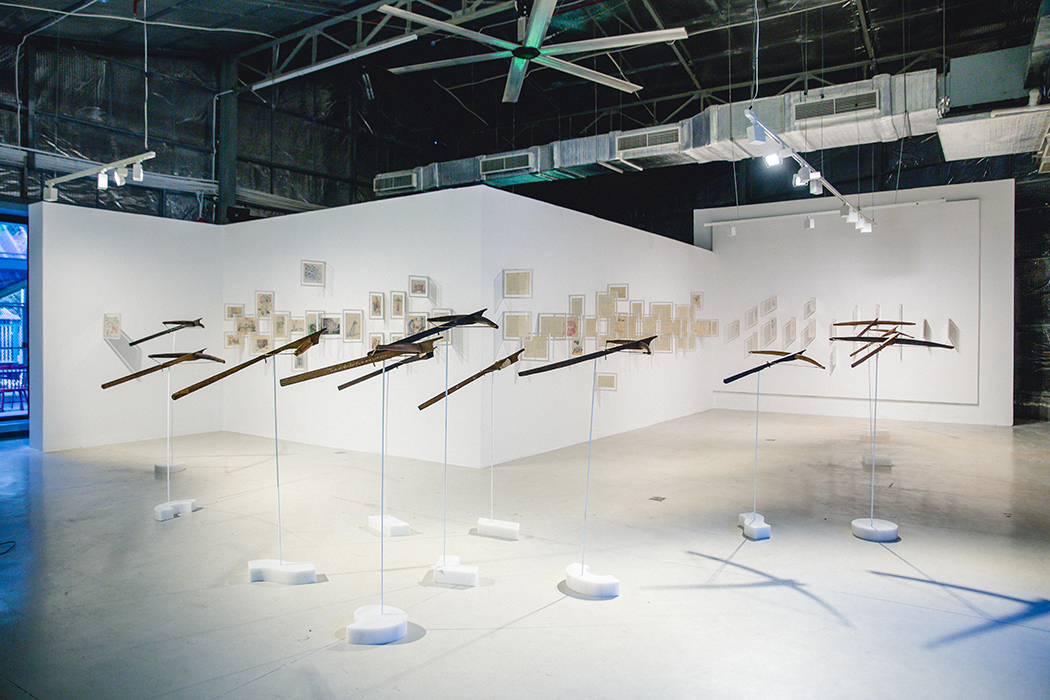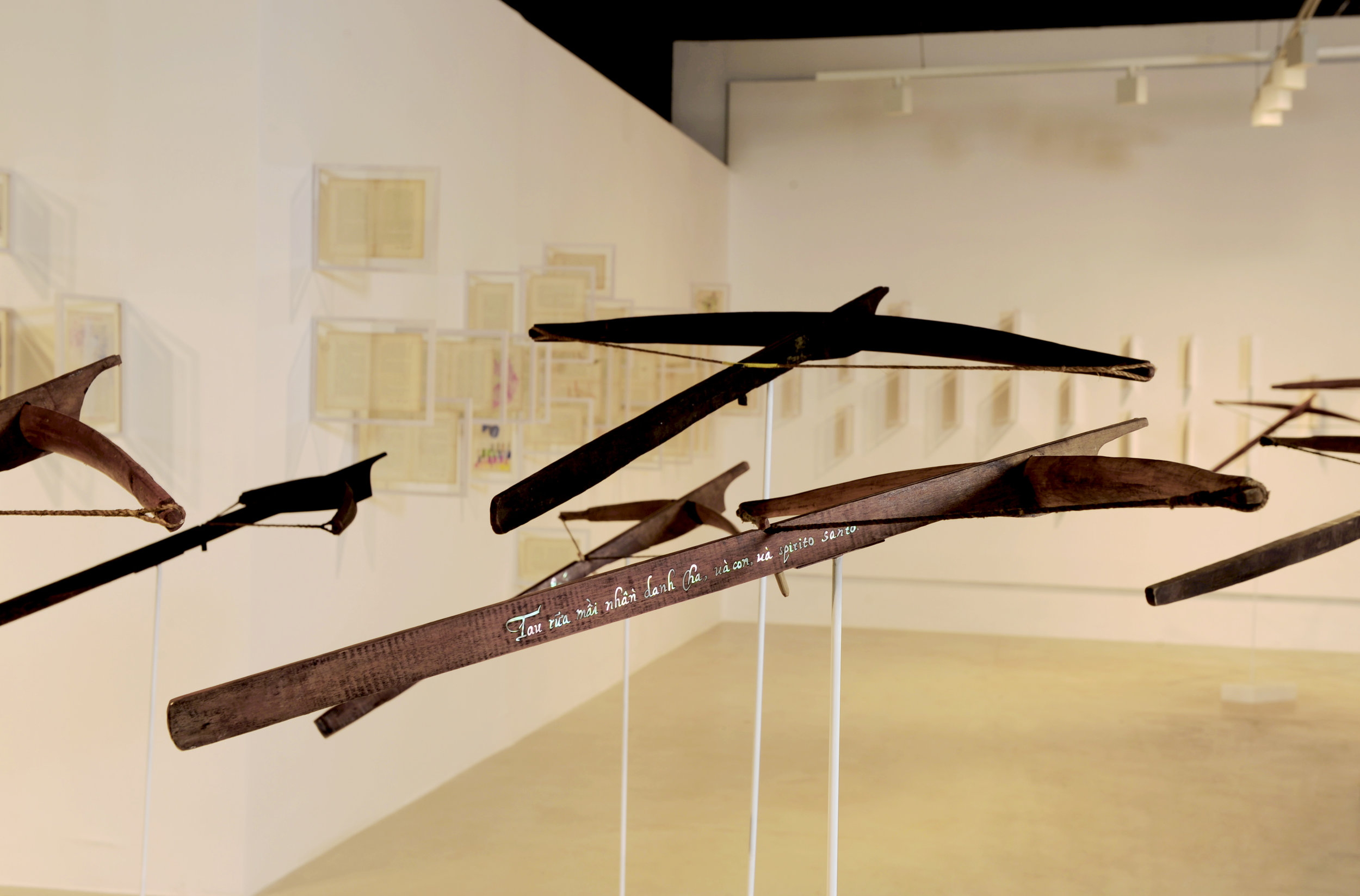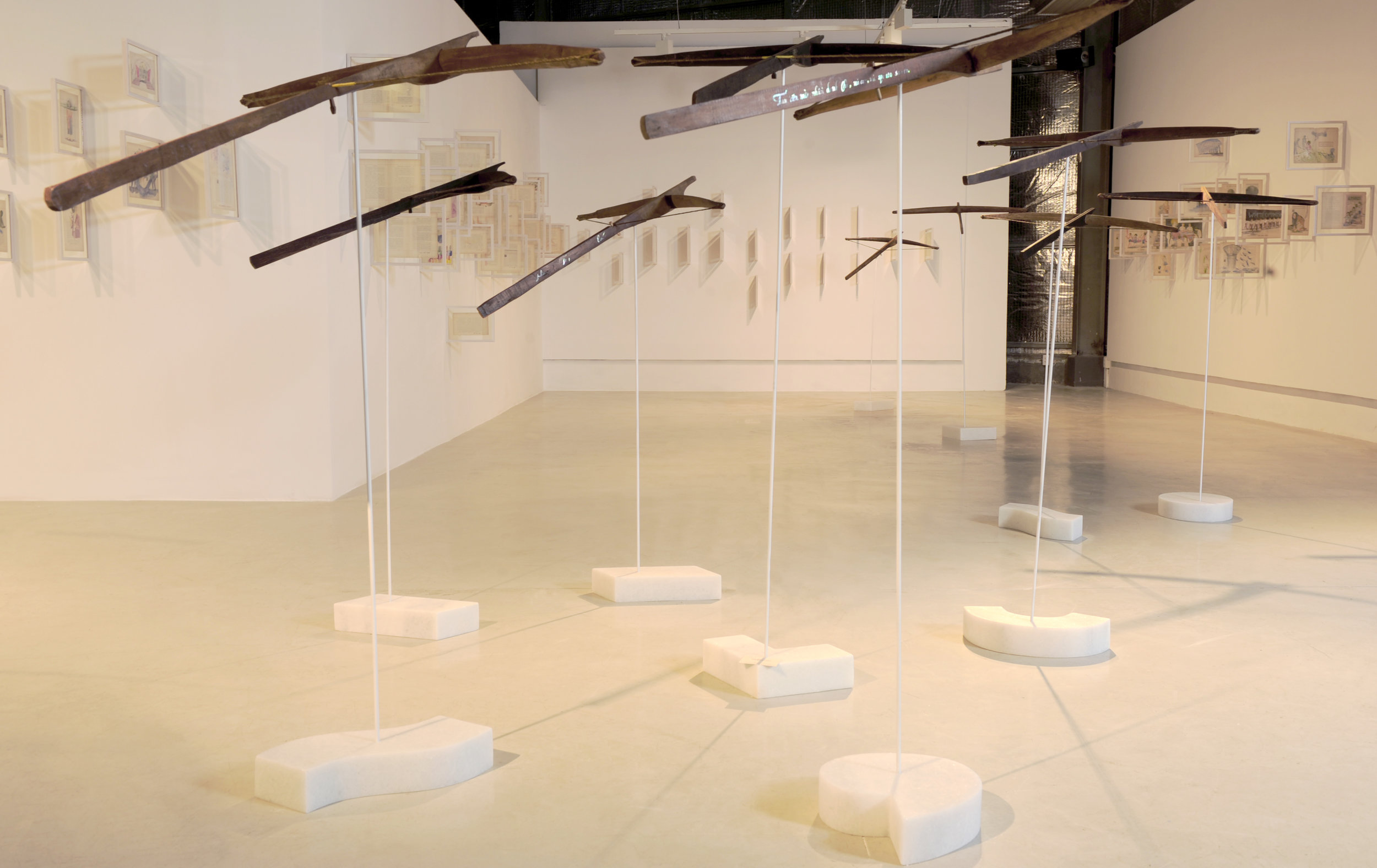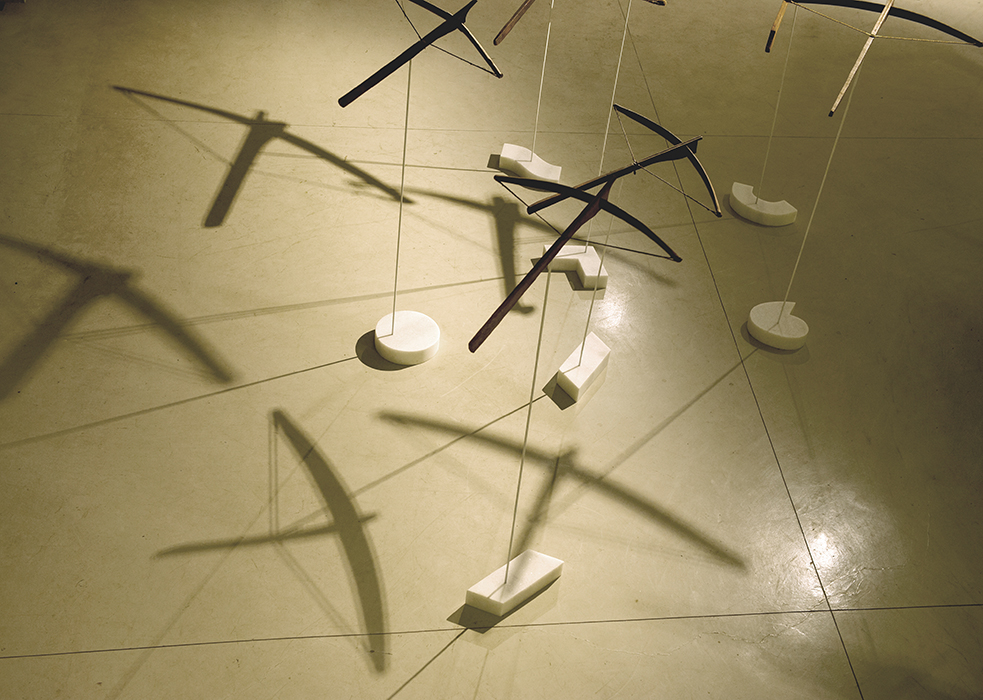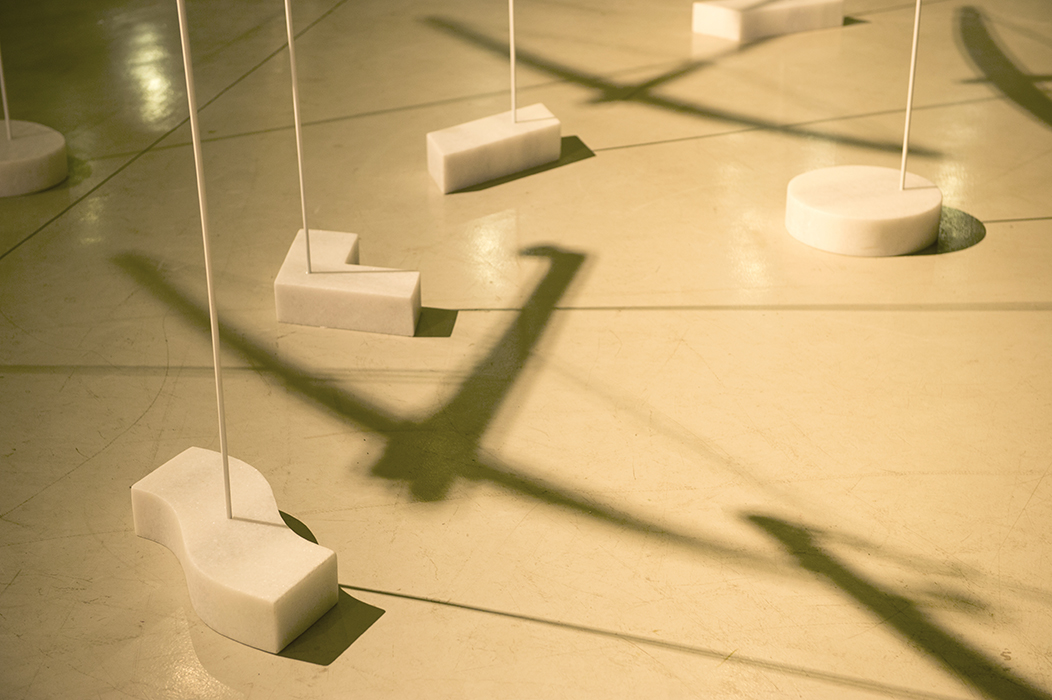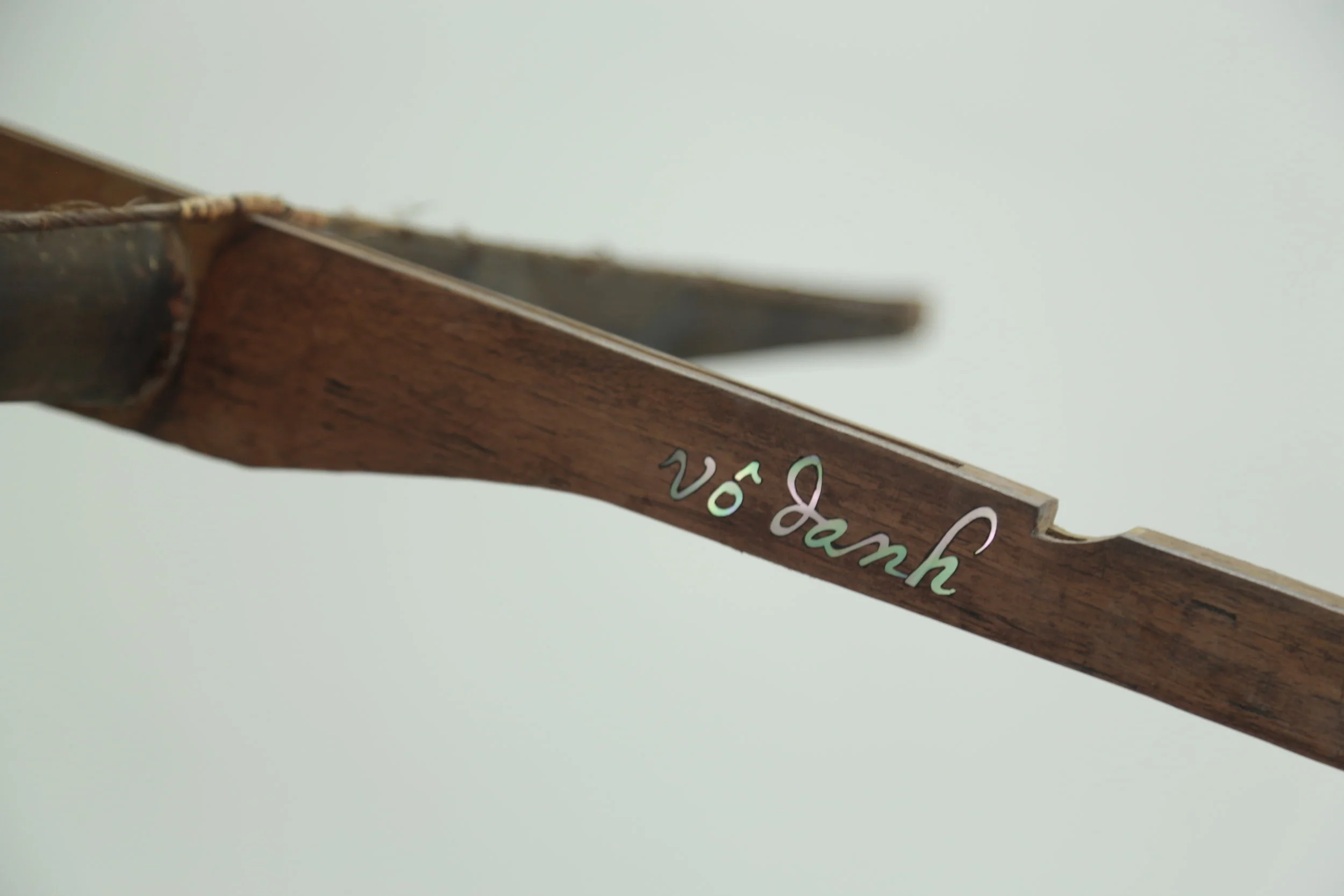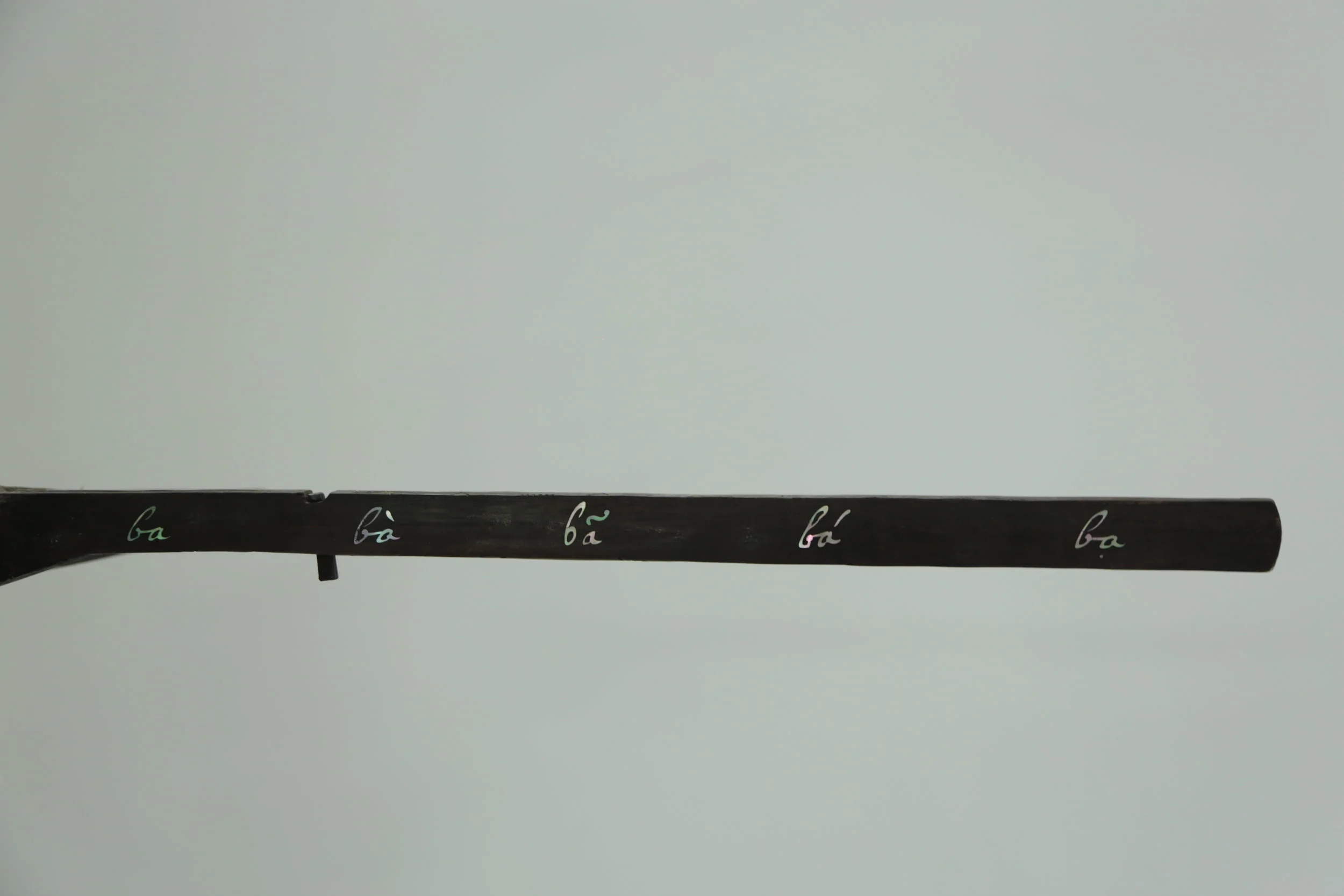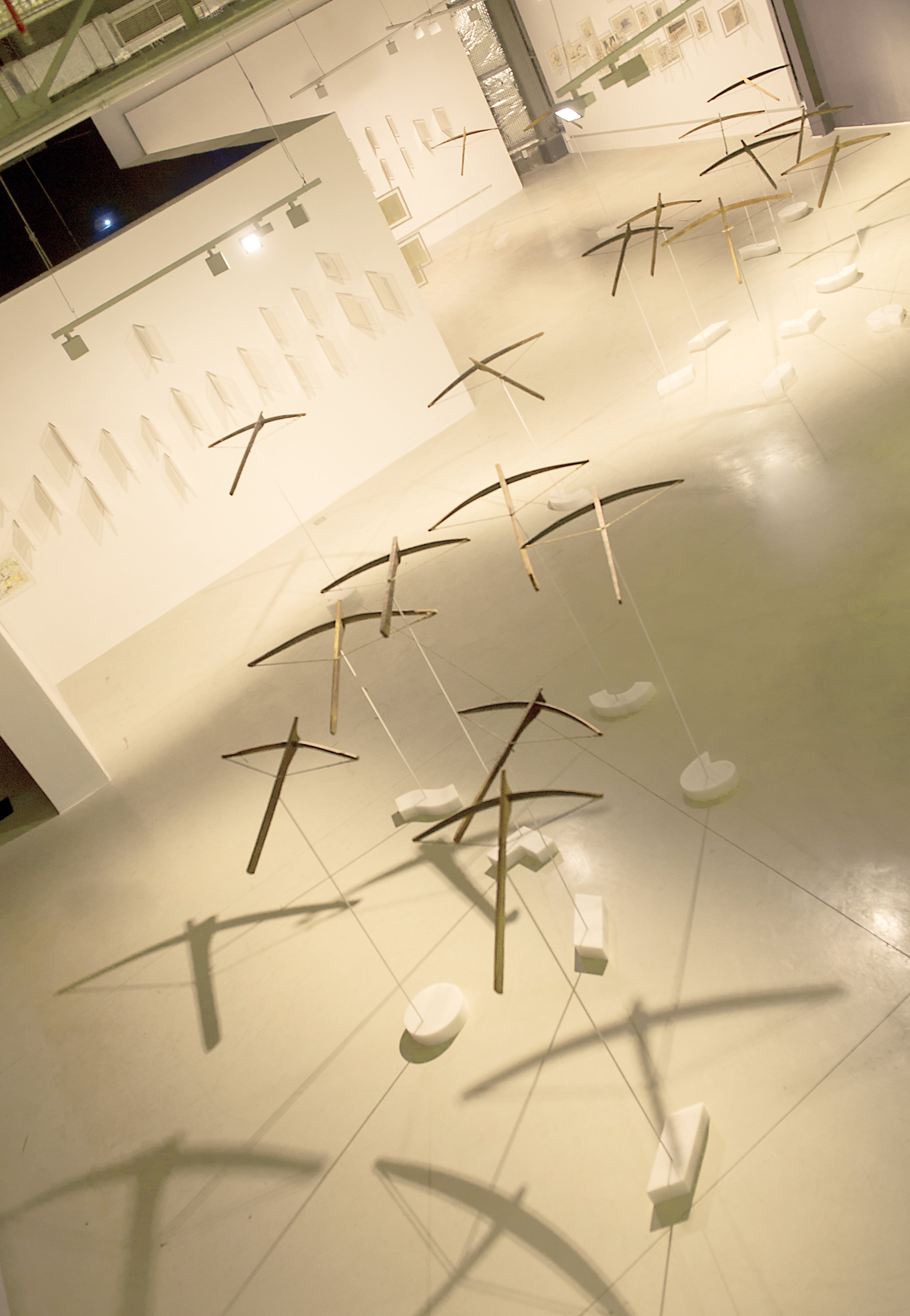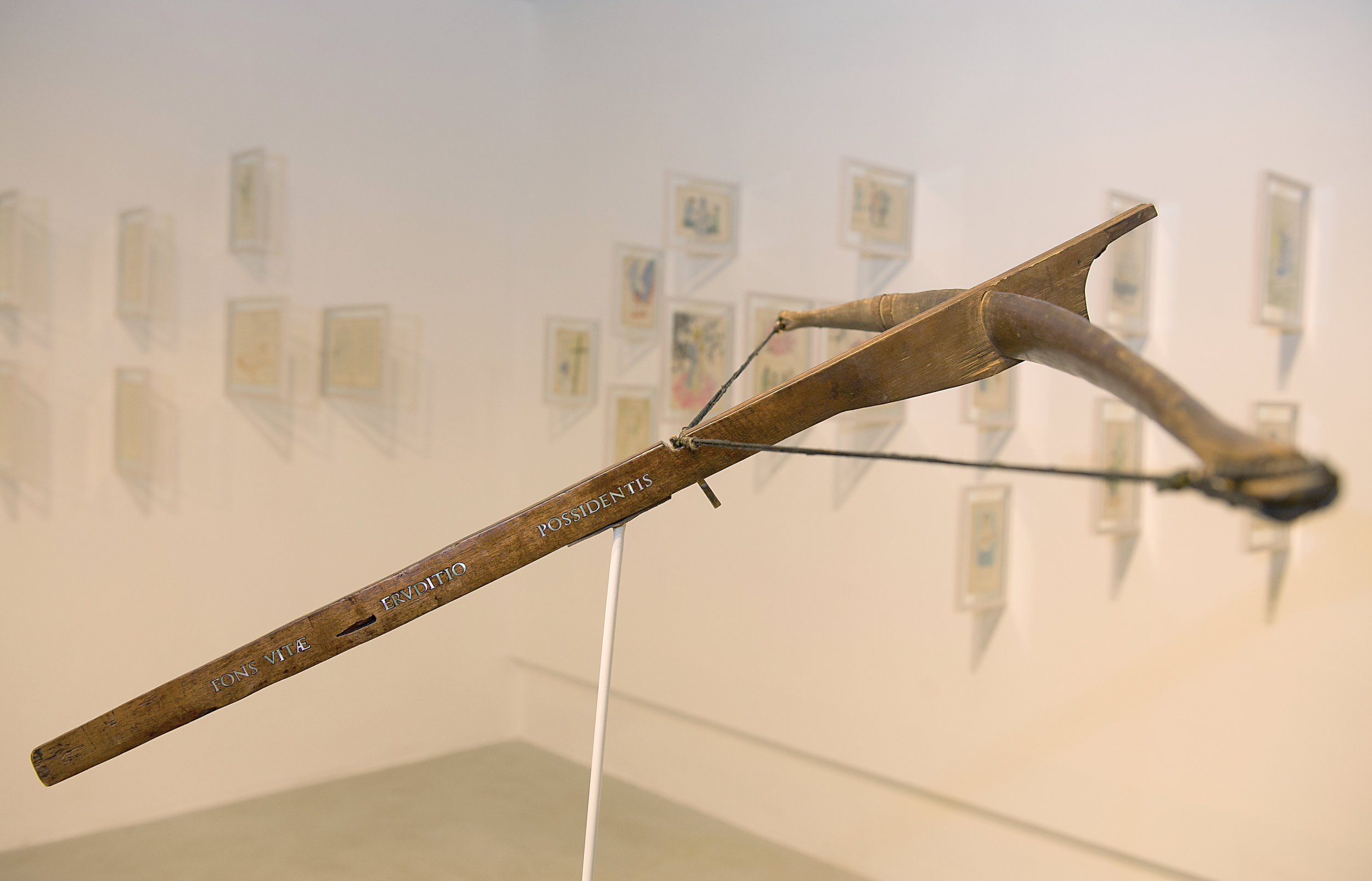Magical Bow (Your Daughter is a Traitor)
2017-ongoing
10 components: Wood, steel, marble, mother of pearl inlay
11 components: Wood, steel, marble
Dimensions: installation irregular
Installation view at Lyon Biennale, 2019
Watercolour on silk, 20 crossbows, airplane propeller, motor
Provided with the opportunity to travel to Rome, Thao Nguyen Phan pored over pages that utilized this alphabet in the archives of the ARSI (Archivum Romanum Societatis Iesu) compelled by the power of chu quoc ngu that had created a critical platform for the French to politically shift the dominance of Chinese culture in the Vietnamese social consciousness. The first written correspondence Phan found, was a letter written in 1659 by Bento Thien (a Vietnamese Catechist) to Giovanni Filippo de Marini, an Italian missionary. In this letter, Bento outlines a brief history of Vietnam (at the time referred as ‘Annam’) , including the myth of the ‘Magical Bow’.
‘The Magical Bow’ is a tale that Phan first read as a child, and is aptly likened to the Greek legend of ‘Helen of Troy’, both stories sharing the tragedy of love in betrayal as consequence of a lust for power. This tale takes us back to the land of Au Lac, the Vietnam of 257-205 BC, which was violently united under King An Duong Vuong. In order to protect the construction of his fortress from the evil spirits of the conquered Hung Kings, the gods granted him a golden turtle. This fantastical creature gifted his claw to King Vuong upon completion of his spiral fortress, telling him to use it as the trigger for his royal crossbow in future defense of his kingdom. The ambitious Chinese warlord Trieu Da, who had thus been unsuccessful in taking over Vuong’s kingdom, creates a devious plan by feigning a peace treaty with King Vuong in proposing his son’s hand in marriage to princess My Chau (Vuong’s daughter). My Chau soon shares her father’s secret with Trong Thuy who then secretly replaces this magical turtle claw with an ordinary claw. Trong Thuy soon requests leave to visit his father, promising My Chau to look for her trail of goose feathers should conflict arise. Soon after, Trieu Da and Trong Thuy wage war against Au Lac, and Vuong in quickly realizing his crossbow is no longer with its golden claw, runs in fear towards the sea, calling the gods again for assistance. The magical turtle reappears to tell him that it is daughter who has betrayed him and the only way for him to survive is by beheading My Chau. Trong Thuy returns to find a trail of goose feathers leading him to the bloodied body of his love on the shoreline. Mired by grief and guilt, Trong Thuy throws himself into a deep well. It is thought that if pearls from the East Sea are bathed in this well, they will shine more luminously with the love of Trong Thuy and My Chau.
In Phan’s sculptural version of this myth, titled Magical Bow (Your Daughter is a Traitor), we see over 20 crossbows floating above the gallery floor. However, look closer and we see a few of these bows engraved with various phrases and words exhumed from the text of Bento Thien and other Jesuits, in mother of pearl. These crossbows are anchored to the floor with marble bases that are shaped in the six Vietnamese alphabet intonations. For Phan, the shape of these marble base pays homage also to Vietnamese modernist artist Điềm Phùng Thị (1920-2002)[i], whose stone geometric sculptures were exhibited in Paris in the late 1960s to great acclaim for her particular utilization of seven different forms, in various entwined configurations, akin to what French critic Raymond Cogniat likened as her ‘alphabet’.
It is the codification of a historical truth memorialized with symbol (eg. the crossbow of betrayal), systematized by language (eg. traditional mythical tale), that ultimately enthralls and concerns Thao Nguyen Phan in its capacity to contain, visualize and transmit knowledge (eg. Ethical or moral lessons). In Magical Bow (Your Daughter is a Traitor), Phan’s bows float disarmed, without their trigger arrows, in stasis as if they have been summarily paused. They are like the powerless army of King An Duong Vuong, but for Phan the static state of this army is not the consequence of an absent golden turtle claw, but the misplacement of learned history - like a bow whose function is rendered decorative without its arrow, so is the past rendered merely descriptive without its record (the arrow carries us to the target; the written record carries us to the reasons why something occurred).
[i] Điềm Phùng Thị is a Vietnamese artist considered one of the country’s modern masters. Her first exhibition in Vietnam took place in 1978 at the Centre for Fine Art in Hanoi (today referred as an exhibition space at 16 Ngo Quyen), and is considered one of the first showcases of abstract art to have taken place in the country. Today there is a small museum dedicated to her art in Hue – ‘House of Điềm Phùng Thị
Excerpt from "Poetic Amnesia" curatorial essay by Zoe Butt
